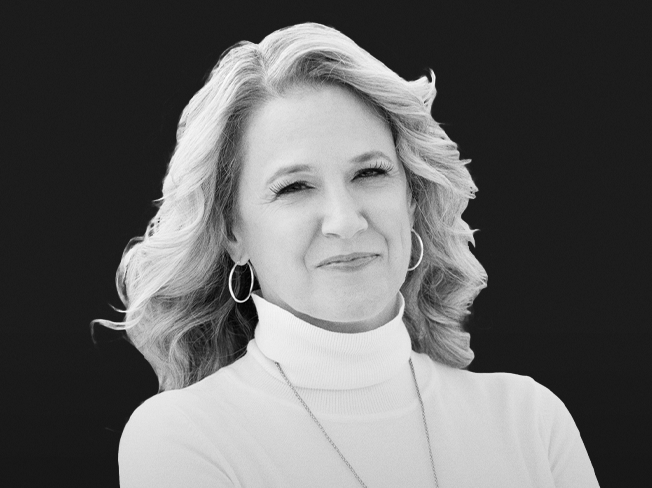Tips for Pitching to Small Business Investors | Tory Burch Foundation
How to Find and Approach Investors
Advice on finding potential investors, and being prepared to seize an opportunity.
37,709 Views
11 Likes
6 min read
Link copied to clipboard
If you think equity financing is right for you, you want to be as prepared as possible to meet and pitch investors. It’s a long process already–don’t drag it out by having to scramble! Kim Seals, general partner at the women-focused venture capital firm The Jump Fund, spoke to our community in a webinar full of great advice for entrepreneurs interested in courting venture capital firms or other investors. While venture-ready companies are required to have a board of directors their founders can turn to, Seals’ tips are invaluable to those trying to find small business investors, creating their pitches and thinking about what to include in their presentations.
Show them why you’re a good bet.
Investors want to see that you have a good idea, and that other people recognize it, too. It’s important to show them your traction. Commonly, traction is interpreted as growing sales or revenue, or, especially for direct-to-consumer products or services, a high number of early orders.
However, traction doesn’t just mean money, especially when it comes to idea-stage or early-stage companies. In fact, in some industries, investors know they can’t expect to see significant revenue at the beginning. “If you’re in life sciences, we aren’t looking for revenue, because we know revenue takes a while when you’re in life sciences, because you’ve got to get through some regulatory approvals,” said Seals by way of example. Investors in those sectors will instead focus on how far a company has gone with the approvals from the necessary industry and federal organizations. Founders can also prove traction with a minimum viable product or by winning grants, “because we can see that you’ve shared your idea with other people, and they believe in you,” she explained. The goal is to show that not only is your idea good, it’s one that people want to buy.
Investors also want to know how easy it will be to see a return on their investment. That means they want to know how you’ll use the funds and your exit strategy. Your company’s legal entity has a bearing here, too. If you’re an LLC, you should consider converting to an S-Corp, because they ultimately create less paperwork for investors.
Think big about the number of people you can possibly reach.
Investors also take a company’s market opportunity into account when deciding whether to write a check. In this instance, market opportunity is the amount of revenue a business would be able to bring in barring competition. “We like knowing that you’re going to target a smaller group to prove your point,” said Seals, but it’s also important to explain to investors how you plan to attract a bigger market further down the line. “Don’t be afraid to promote yourself, to promote your idea and say, ‘This is a big idea. I may be starting here, but this is really a big idea’.”
Know your worth.
Founders seeking venture funding should be able to explain what their company is worth and why. Though it’s difficult for companies in their very early stages to make those calculations because of low or no revenue, it is still possible to communicate to investors just how great your business will be one day.
Seal recommends founders of companies who don’t currently have revenue use either the Berkus method or risk factor summation method to calculate their valuation. The Berkus method accounts for the overhead associated with a product or service, then increases the company’s valuation based on the operational elements that reduce their risk of failure. The risk-reduction elements that add to $500,000 respectively to a company’s valuation are sound idea, prototype, quality management team, strategic relationships and product rollout or sales.
The risk factor summation method uses the valuation of a comparable startup as a base and then adjusts the valuation based on 12 risk factors, including legislative risk, management risk and competition risk.
Start your search.
Seals says sometimes younger companies will have better luck with single high net worth individuals than major venture capital firms. “You’re typically talking to solo angels, which may be individuals who have their own startups and maybe they exited the startups. And they have a lot of cash from those exits, and they want to pay it forward, they want to invest in other companies.”
Some angels may get together with others to form angel networks. The investors pay a fee to be in the group and have access to several investment opportunities from which they can choose. However, each investor makes their own decision and writes their own check. Most founders find solo angels through networking, but you can also search Angel Capital Association for potential investors. Outset Capital also has a list of almost 200 women-founded funds.
Networking is also key to finding investors. Talk to entrepreneurs you know about the meetings they’ve had, and find out from founders at a venture firm’s portfolio companies if they’ve had a good experience.
Gather your materials.
When you’re beginning conversations with potential investors, there are a few documents you should have on hand.
Executive Summary
This is a one- or two-page document that gives a brief overview of what your company does, a brief financial overview and a little bit about you and key team members (remember, your company will need a board of directors before you begin the venture capital process).
Market Summary
Explain the problem you’re solving and who your potential buyers are. This is your chance to demonstrate to potential investors the size of your market opportunity.
Financial Models
“Have some detailed financial models that show us how you’re going to make money, even if it’s just your ideas right now, because you haven’t taken on any revenue,” explained Seals. Basically, the models are a way to explain your goals by the numbers. It’s important to include information like how many people you plan to hire and your projected revenue within five years. Though you will likely have a team member create these models for you, as a founder, it’s important you know and understand these numbers.
Deck
You will also need a series of slides, called a deck, to share with potential investors about your company. It should be short and easy to scan. Seals suggested a deck answer the 10 following questions:
- What problem are you solving?
- What is your solution to the problem?
- Who has this problem?
- Who are your competitors and why is your solution better?
- How are you going to attract customers and how much will it cost?
- What are your sources of revenue and expense assumptions?
- Who is on your team and why?
- How much money do you need and why?
- How do you intend to give investors a return on their investment?
- In summary, why should someone invest?
Dedicate one slide to each answer.
In addition to these written materials, you should also have a 30-second elevator pitch ready, as well and a one- to two-minute short follow-up prepared in case someone asks for more information.
Do your homework on investors.
You’ve found an investor in a database like Angel Capital Association that seems like a fit for your business; pause before you fire off an email! Look at their past investments to see if they’ve written checks to companies like yours to gauge potential interest. Look at their LinkedIn profiles–they may clearly list the kinds of businesses that interest them. You’ll also want to note what stage businesses they want. A VC firm may want to invest in businesses in your same industry but maybe ones that are further along, for example. Investors will do their due diligence on your company, and you should screen them just as carefully. “Do your homework on the investors,” Seals advised. “That’s the best advice I can give you.”
Help an entrepreneur by upvoting
Timely Topics
INTERACTIVE GUIDE
FUNDING FINDER
Learn what capital options are right for financing your business
Get Started


